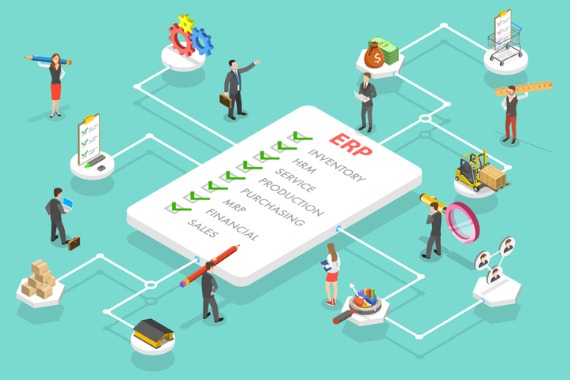Supply chain disruptions have lasting, devastating effects on business and the economy. Consider the 2020 supply chain crisis, where the increase in consumer demand for durable goods led to a global supply chain crisis that has yet to resolve because of interdependent factors like inflation.
Businesses across the economy are suffering in response to delayed deliveries, increased uncertainty, and overworked employees. According to the U.S. Census Bureau’s Small Business Pulse Survey, more than 38% of small businesses experience domestic supplier delays, and 18% still find it challenging to locate alternate domestic suppliers.
The road to recovery is unsure, so here are some tips on avoiding further supply chain disruptions in 2022 and beyond.
The Cause of Today’s Supply Chain Disruption
At the root of the supply chain crisis was the overreliance on the just-in-time (JIT) production model, which has proven insufficient to handle the increase in demand for consumer products.
Manufacturers and Distributors looking for reasons: 2021/22 Supply Chain Disruptions
As demand continues to rise post-pandemic, the supply chain of major ports and facilities feels the pressure of meeting these new requirements amid the lingering effects of the pandemic restrictions, the consolidation of the shipping industry, and the China port restrictions encouraging increased shipping costs.
The need for truck drivers resulting from poor working conditions and lack of proper wages contributes to the delays in meeting consumer demand. According to the American Trucking Association, in 2021, the shortage of truck drivers reached a record high of 80,000 drivers.
The labor shortage makes the movement of consumer products from manufacturer to consumer challenging. When containers pile up at the docks, other ships are forced to wait at sea for weeks.
Why Avoid Disruptions In 2022 And Beyond?
Supply chain disruptions affect your business deliverables and finances. Delayed deliverables mean your business is failing to meet customer demand. This can significantly impact your company’s reputation, customer loyalty, and potential consumer pool, who might prefer your competitors.
And what is a business without its customers? You cannot survive without incoming revenue. Also, these disruptions lead to high additional costs from operational waste and excess safety stock.
Manufacturers especially carry additional safety stock to offset the unexpected changes of the disruptions, which come with additional inventory costs. The cost of excess safety stock is higher if you have a larger business.
Read more: How Manufacturers and Distributors Can Mitigate Global Supply Chain Disruption TODAY
This is business capital you can invest in other business growth areas like marketing. Also, a lack of stock means employees’ day-to-day operations are interrupted or stalled. Idle employees cause lost productivity costs.
If you respond speedily to this inventory shortage, you risk creating a snowball of expedited fees and overtime pay. This type of inefficiency also contributes to the deliverables delay.
In a nutshell, the cost of supply chain disruptions is too high for your business. Supply chain disruption in the U.S. cost $228 million in 2021, so it pays to mitigate further disruption beyond 2022.
How Can ERP Help Streamline Your Supply Chain?
ERP systems directly impact business growth because they identify changes as they happen, making it easier to monitor performance and remove any blind spots in operations. By automating the supply chain process, an ERP system reduces human error and increases workplace productivity and creativity.
In the face of supply chain disruptions, an ERP system integrates data from your entire business operations, enhancing your business operations visibility from a 360 degrees point of view.
As a result, you gain insight into factors that affect your demand, product purchase, and manufacturing processes.
Using your streamlined business data increases your efficiency and streamlines your workflows to enhance your operations. With an ERP, you can identify the exact amount of stock you need to meet your customer demand even when it spikes unexpectedly. The ERP uses your company data, historical trends, and sales forecasts to determine your customer demand accurately.
With this level of visibility into your inventory costs, counts, and location from warehouse to warehouse, your ERP makes it easier to optimize your operations, fulfill orders faster and enhance the performance of your supply chain.
One other advantage of using an ERP solution is that it enhances supplier relationships by tracking suppliers’ communications, performance, and quotations. And because data is centralized in an ERP solution, you quickly make purchase orders depending on your demand requirements.
Future-Proof Your Supply Chain With ERP
An ERP system gives you the agility to adapt to unexpected changes to your supply chain fast, thus, making your business supply chain operations more flexible and resilient.
Integrate your supply chain management system with an ERP solution to prepare your business for unforeseen supply chain disruptions. The right ERP solution benefits your supply chain by increasing efficiency, customer retention and satisfaction, and reducing operational costs due to automation and enhanced employee productivity.
To survive the future supply chain, you need three things: automation, accessibility, and analysis. An avid ERP solution allows you to control your purchases, inventory, and business collaboration based on consumer satisfaction. Its visibility ensures you have the tools to prepare your business for any supply chain disruption.
FAQs
What is the cause of the global supply chain disruption?
Labor shortage, increase in consumer demand during and post-pandemic, and overreliance on just-in-time supply chain models contributes to the supply chain disruption.
What is the impact of supply chain disruptions on businesses?
Supply chain disruptions mean companies fail to meet customer demand, which results in lost customers and revenue. Also, these disruptions require high additional costs to mitigate the effects of the disruptions, like the cost of buying excess safety stock.
What Can An ERP Solution Do To Future-Proof Your Supply Chain?
An ERP solution offers visibility into your business operations, making it easier to optimize processes, meet customer demand with consistent inventory, and prepare for any unexpected disruptions through sales forecasting.



